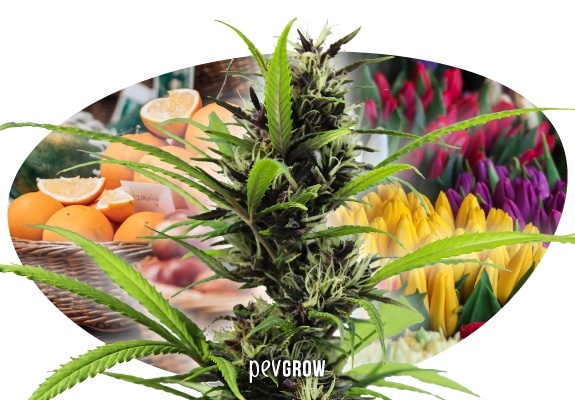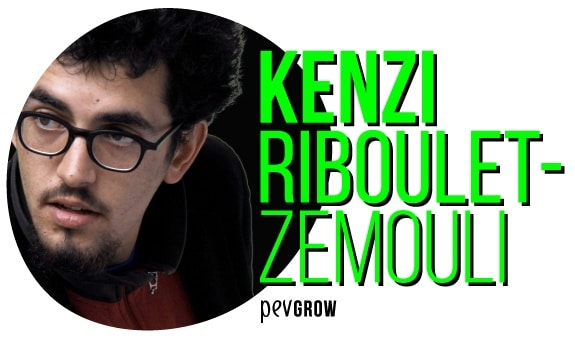

23-04-2021 17:00:57 - Updated: 23 April, 2021
All your life thinking that the buds of plants of cannabis were flower clusters, and now we are proven wrong. But this is only part of the study published recently by independent researcher Kenzi Riboulet-Zemouli, so if you want to find out about his surprising discoveries, I invite you to read this article where we explain everything in depth.
⚠️ Why is this research being done?
Until now, there were several terms related to cannabis that led to confusion, starting with the word “cannabis”, which we apply to refer to both the plant and the part that is consumed. The project tries to establish a unique nomenclature, based on scientific evidence, and not as has been done until now.
It is no coincidence that this research is being carried out right now, since it goes in parallel with the evaluation that the WHO has been doing during the last 3 years about this plant and its derivatives. A short time ago the World Health Organization changed the list of controlled substances to the marijuana plant, and established that cannabidiol (CBD) should not be a persecuted substance.
🎬 How was this interesting study carried out?
The first thing was to try to gather or compile all the terms found throughout history, both in pharmacopoeia books, popular knowledge, academic literature, clinical medicine data, archives, international law, field pharmacy, natural medicine, etc.
The first thing that was done was to compare all these names to determine to what extent they coincide, contradict, or directly conflict. The first conclusion was quite evident, and that is that there was no scientific basis international that could argue why these terms had been acquired, because they are very ambiguous or inconsistent.
It seems that there is a clear disagreement in the taxonomy, and especially in the parthenocarpy of marijuana, which is not directly taken into account with this plant. The study carried out by Kenzi Riboulet-Zemouli proposes a global update of cannabis terminology on several levels, because confusion can cause problems.
👾 Marijuana buds are parthenocarpic fruits
One of the most surprising conclusions of this study is the one that states that the buds that we consume from female cannabis plants are not flowers, as has been thought all our lives. Ideally, we would refer to the buds as parthenocarpic fruit or directly parthenocarpic fruit, but what does this mean? Well, the flowers do not give seeds, if seeds come out of the buds of female cannabis, it is because they are fruits and not flowers as previously thought.
The parthenocarpic fruits only occur in some types of plants, and are the formations that are created when the males do not pollinate the females, what we had always called “Sinsemilla” flowers or buds. According to the researcher himself “It is not surprising that the Cannabis-related research has overlooked this element: parthenocarpy is a counterintuitive biological mechanism that is often subject to confusion, even among experts. ”
🧐 Other important conclusions of this study
The prohibition of cannabis has enhanced the lack of unanimity in the nomenclature and in the criteria, because the lack of serious scientific studies has caused that most of the terms related to this plant we inherit, learn in the street, or we can even read them in some publications.
Sometimes we use the same word to refer to different parts of marijuana, just like I just did. The term “marijuana” serves as much for the plant itself, as for the parts that we smoke. Another example is the word “pollen” that in Spain we also use it to refer to a type of hashish. Another word that we often misuse is “hermaphrodite”, since we also use it to refer to intersex women.
Something similar happens with derivatives and extracts, since many times we use the word cannabis oil both to refer to CBD oil, seed oil, RSO (Rick Simpson Oil) and even when we talk about the extract made with butane gas , the BHO.
🎯 Who is Kenzi Riboulet-Zemouli?
Kenzi is a young independent researcher and cannabis activist of Franco-Algerian nationality, although he currently resides in Barcelona (Spain). He was co-founder of NORML France, and also of the FAAT (Foundation for an alternative approach to addiction and substance dependence).
His work is essentially based on applying ethics, human rights, fair trade, and sustainability, to use, production, and marketing of plants, fungi, and other psychoactive substances. He actively participates in campaigns in France and Spain, and it is common to see him in the meetings of the United Nations narcotics commission, both in Vienna (Austria) and in Geneva (Switzerland).

✅ Will anything change from of this moment?
In principle we assume that most people will continue to call cannabis and its derivatives as they have been doing until now, in fact many people have not yet found out about this study, and it is also difficult to change the terminology that until now we took it for good.
Something that we should change is the lunar and biodynamic calendars, because here it does intercede directly. Normally we adapt the lunar calendar to our cannabis cultivation, always prevailing on “Flower” days, but after the publication of this study we would have to ask ourselves if what we want to promote in our cultivation is the fruits. The breeders and seed producers who apply the lunar calendar in our garden, always chose the “Fruit” days, thinking about the highest production and quality of seeds, and it may be that unconsciously what we promoted was the production of buds, although it is also It was true that this improved the seed harvest as well.
🚀 Conclusion
This does not happen only with the words we use in the cannabis field, it happens often in other matters of life. The problem is that cannabis is still a taboo subject in many places, and it has been in most of the world for many years, and that has further accentuated the lack of unification of scientific criteria and variation in terminology related to this plant.






Thank you for your research, an interesting read
I would like to download the report and see the evidence that led to all your conclusions. that would be special.